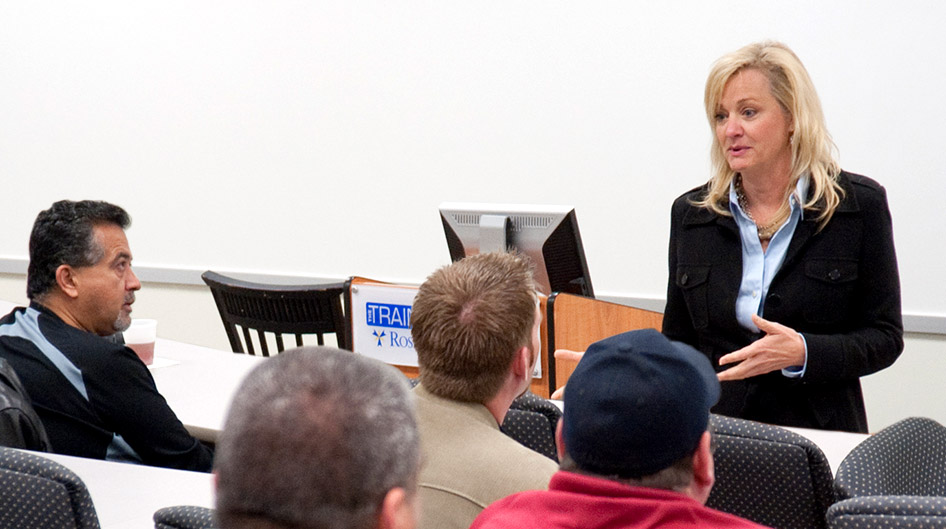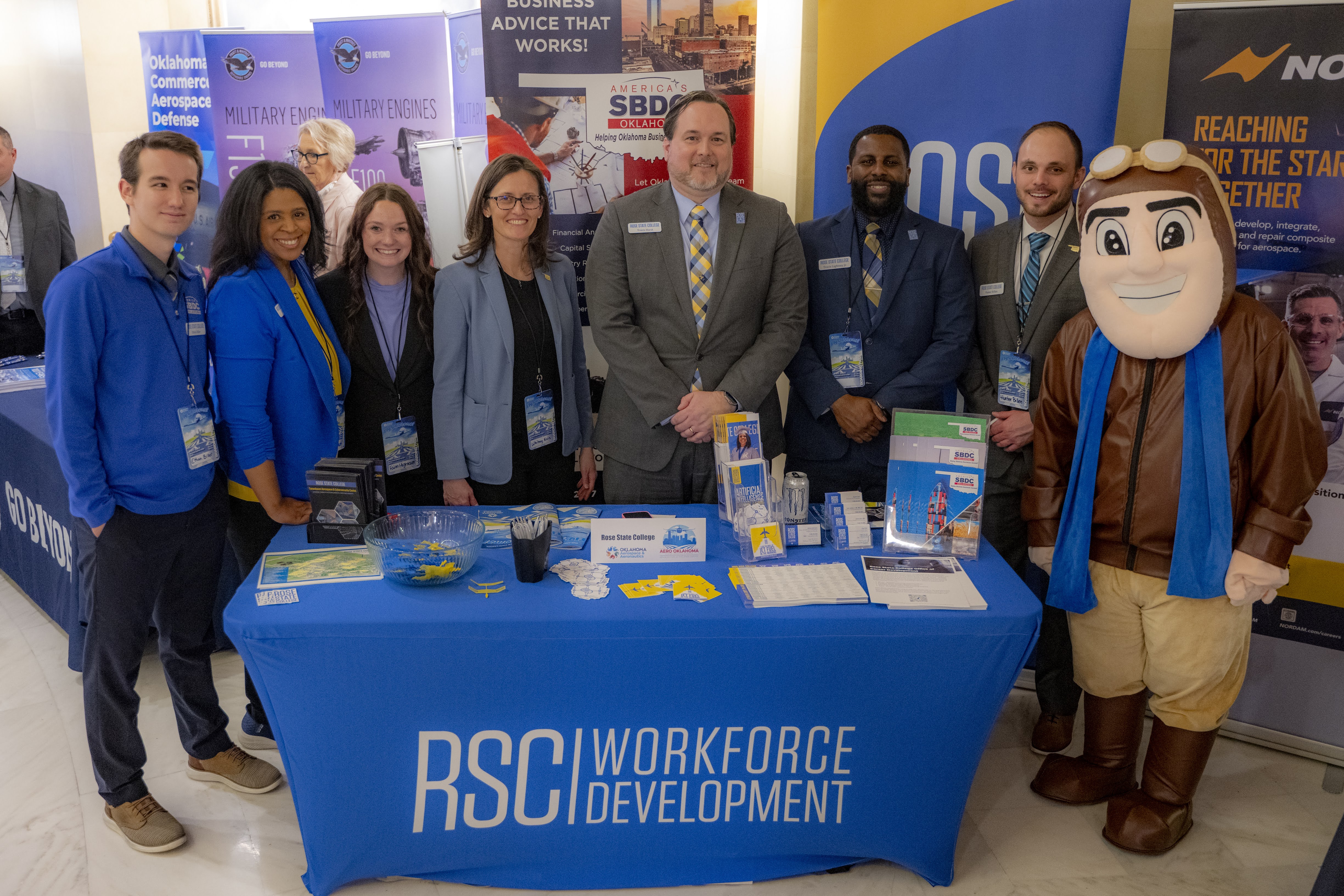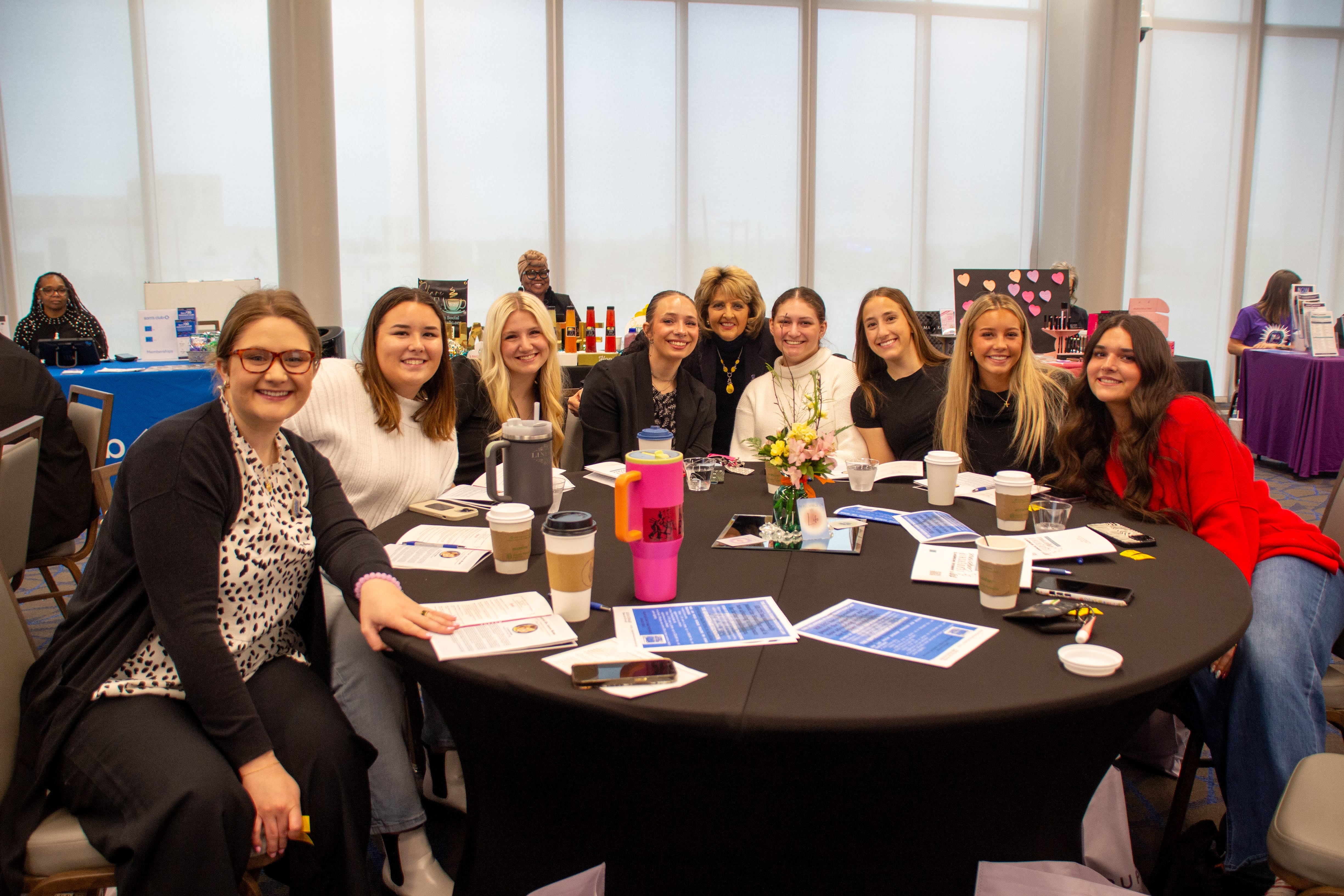Computer Use Policy
The College provides lab computers, software, peripherals, and network services for use by Rose State students, faculty and staff to support academic and administrative functions. Personal use of these resources for other purposes is permitted when it does not consume a significant amount of these resources (to be determined by the network administrator), does not interfere with the performance of the user’s job or other college responsibilities, and is otherwise in compliance with this policy. These resources may not be used for personal commercial purposes or for personal financial or other gain. Further limits may be imposed upon personal use in accordance with normal supervisory procedures.
User Guidelines
- Network logons are automatically created for each student upon enrollment. Faculty and staff (part-time or regular) may obtain a network logon upon request of the immediate supervisor. Students, faculty, and staff are responsible for any access code assigned to them, which includes not sharing any network or computer system logons and passwords. An access code includes any form of information used to authenticate, secure, or control electronic information technology resources. Examples include network logon Ids, passwords, keys, and door codes.
- Copyrighted software must only be used in accordance with its license or purchase agreement and must not be copied or altered except as permitted by law or by the software licensing agreement. ITS staff will install college-approved software on college-owned computers. Upon request, ITS staff will install personal software as long as it is licensed.
-
Inappropriate conduct that will not be tolerated includes, but is not limited to:
- Unauthorized access, alteration or destruction of another user’s data, programs, electronic mail, or voice mail.
- Attempts to obtain unauthorized access to either local or remote computer systems or networks.
- Attempts to circumvent established security procedures or to obtain access privileges to which the user is not entitled.
- Obscene, offensive, threatening, harassing, or intimidating material entered into the computer and sent by electronic means.
- Intentional viewing of pictures of an erotic or sexual nature when such images can be viewed by others who are offended by them; and, mailing, printing, or copying obscene materials.
- Knowingly running, installing, or giving to another a program or data file which could be classified as or contain a computer virus, worm, or Trojan horse.
- Activities that embarrass, denigrate, or libel an individual or organization.
- Activities that imply College endorsement of any commercial products other than those approved by the appropriate Executive Council member.
Website Purpose
The Rose State College website will provide easy access of college-related information to faculty, staff, students and the general community from both on- and off-campus on a 24-hour basis. Any division, department, or College-recognized student organization may request that their web pages be mounted on the college server. Faculty and staff who have a College-related purpose to publish information on the Internet will also be provided space.
Procedure for Obtaining Web Space
Student organizations wishing to develop a site may request space on the server through their faculty sponsor. College personnel may request space on the web server through the web coordinator for their department or division. A list of web coordinators may be found on the internal web.
Page Content & Maintenance
College web pages will fall into one of three categories:
- Faculty Web Pages
- Student Organization Web Pages
- Official Pages (all those that do not fall into any of the above categories)
The division deans and department directors will assign an individual(s) to be web coordinator for their respective areas. The web coordinators will be responsible for reviewing web pages to ensure they meet policy and for maintaining appropriate official pages on the College web site. ITS will maintain a list of all web coordinators. ITS staff will maintain web content for those offices that are unable to maintain their own content due to staff size. Student Organization web pages must be reviewed by the Director of Student Activities or his/her designee. Web pages will be reviewed on a quarterly basis by the web coordinator for current content. Web pages that are not kept current will be removed from the web.
All Official Pages and Student Organization Pages will utilize a common template(s) approved by the Computer Services and Technology Steering Committee.
All Faculty Web Pages must include:
- the date that the site was last modified
- an e-mail link to the person responsible for the site
- a link back to the RSC Home Page and to the Disclaimer
General Guidelines for All Web Pages
The home page file must be named index.htm or index.asp. Access to other web pages will follow standard URL naming and linking protocols.
File space for Faculty Web Pages and for Student Organization Web Pages will initially be limited to 50 MB and 10 MB, respectively. Additional space will be granted on an as-needed basis and as server capacity allows.
For security reasons, Common Gateway Interface (CGI) scripts are not permitted. (CGI scripts are often used to process Web-based forms or perform other tasks based on the actions of someone viewing a Web page.)
Java applets, small self-contained programs included within a Web page, are allowed. However, the applets must be version 1.02 compliant or Sun plug-ins may be used.
All pages must comply with at least Priority 1 checkpoints for accessibility as specified in the W3C Accessibility Guidelines. (The Bobby Accessibility Tool will analyze a page and provide feedback for complying with the W3C guidelines.) In addition to making our pages more accessible to those with visual impairments, complying with these checkpoints also makes the pages more readable for everyone.
When at all possible, link to existing "official" documents instead of creating separate instances. For example, link to the "official" program sheets and course information pages instead of creating different versions.
Consider all contents of the "web development" folder on the network "W" drive to be "live." That is, the replication service that makes the contents of this folder available from off campus will transfer these files either instantly or at pre-determined times. Therefore, all web page work should be performed on a drive other than the "W" drive and tested before moving files to this location.
An individual's web pages will be removed from the web upon termination of employment with the College.
Use of College Logo
The use of the Rose State College LOGO assures a coordinated and consistent representation of signature and symbol in communications that represent the College. Whenever it is appropriate to use a symbol to represent the College, the entire LOGO should be used.
The name of the College should accompany the LOGO on the same page of material unless approval has been given. The name of the College when used with the LOGO should be spelled out in its official version "Rose State College." The College type face Class Garamond should be used when printing the College name. The College name should be used with all caps. Other recommended typefaces include Garamond, Times, and Arial.
The LOGO should not be distorted, incorporated, graphically altered, or used as part of another LOGO or graphics, without approval from the office of Marketing and Public Relations.
The use of the LOGO and the necessary materials for its use will be prepared and maintained in the Marketing and Public Relations office and will be available for anyone who needs to use the College LOGO in an institutional capacity. Official electronic files of the College LOGO in various formats may be obtained from w:web developmentlogo.
Legal Issues
There are some restrictions on the kinds of materials that can be published on the College network. The policy is as liberal as possible, but state and federal laws do necessitate some restrictions. If these policies are too restrictive, individuals are welcome to employ a commercial access provider. For-profit activities may not be conducted on or through the campus network. Generally, laws that apply to the printed word apply in the electronic medium as well. These laws include restrictions on libel, slander, threats of bodily harm, and pornography. A networked server is like a printing press, and it should be treated as such. If the material cannot be printed in a newspaper, it cannot be placed on the Web.
Use of copyrighted materials is a sensitive issue in the field of education. Educators and students are granted a certain latitude when pursuing a non-profit, educational goal. Copying a couple pages from an article and passing those out to students in a closed classroom, however, is entirely different from making those same pages available over the open Internet for all the world to see. When using copyrighted materials, it is always best to obtain permission from the owner of the copyright. For more information concerning use of copyrighted materials, consult the FITT Materials Copyright Page.
To protect individual privacy rights, none of the pages on the RSC public Internet site will contain pictures, student or staff Ids, or any other personal information that specifically identifies individuals without the prior consent of those individuals.
Materials that are deemed by the College administration to be illegal, offensive, or otherwise in violation of this policy, will be removed from the College server. If the webmaster receives a complaint that a set of documents is in violation, the person responsible will be notified, and public access to those documents may be blocked until the appropriate administrative officials can review the materials in question.
Questions about copyright, libel, liability, privacy, and other legal matters should be directed to the RSC Copyright Officer or the appropriate vice president.
Web Page Design Guidelines
- Test pages in both of the major browsers, on multiple platforms, and from different connections if possible.
- Analyze the site often for broken links and fix if necessary.
- Make an attempt to maintain websites efficiently and use network resources wisely.
- When designing your page, consider the purpose and target audience of the web page. Be certain that the page title is accurate as this determines the default bookmark name, the title that is read in a speech synthesizer for the blind and the title that is returned in search results.
- Check meta tags for keywords and description. These control how the site is indexed by a search engine.
- Consider page download time. Most users will have a 28.8 or 56.6 kbps modem at home. With normal network congestion, the transfer rate at these connections would be roughly 2 Kb/s or 4 Kb/s respectively. As an illustration, suppose a web page and its supporting files total 80 Kb and a person is connected on a 56.6 kbps modem. That page would take 20 seconds to download completely. Ask yourself the question, "How long would I wait for a page to download before moving on?"
- Make use of white space and keep line length to around 15 words.
- Keep page length to a minimum and use anchors on a lengthy page. In general, it's easier for a user to click on a link to an anchor on the page or to another page altogether than to scroll up and down a lengthy page.
- Use frames only when there is a compelling reason to do so. They tend to confuse most users especially when creating bookmarks and printing pages.
- Be careful when using non-standard fonts for body text. If the end-user does not have the font on his/her system, the font will be substituted.
- Make sure that the text and background contrast well so that the text is readable.
Links and Navigation
When designing navigation, consider the user's perspective. It should be logical and enable them to move freely within the site. Maintain a consistent navigation interface across all pages within the web site. Consider making navigation available at the top and bottom of the page.
Make hyperlink text descriptive of the page that it targets. Avoid phrases like "click here," "next" and "back." Include links on the home page to appropriate pages outside the web site.
Don't overuse the pop-up window as it tends to confuse most users. If used, make sure that it is clear to the user how to get back to the original window. When linking to a non-html file, include a parenthetical remark stating the file type and the file size.
Graphics
Keep buttons, rules and bullets to less then 2 KB and headers to less than 20 KB. Keep other graphics to less than 60 KB (30 KB preferred). If larger files are necessary, consider using thumbnails which link to larger versions. Reuse graphics when possible instead of creating duplicates in multiple locations.
An "images" and "resources" folder will be maintained at the root of the college web site with some of the universal graphics and utilities. Please point to the files in these folders instead of creating duplicates.




